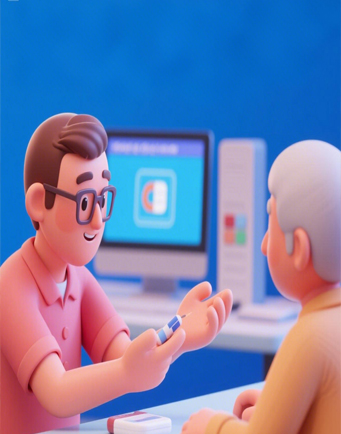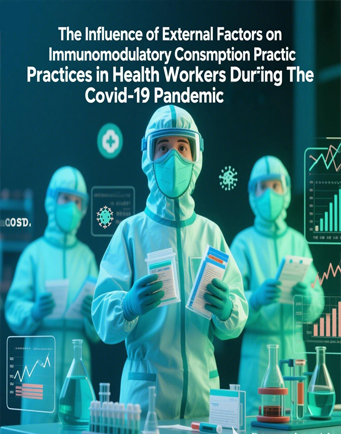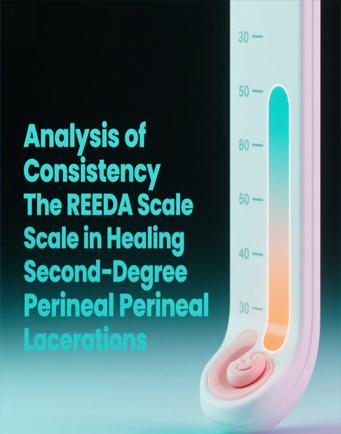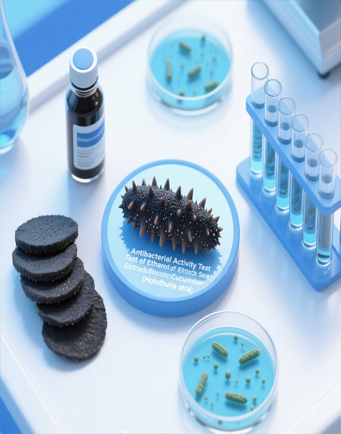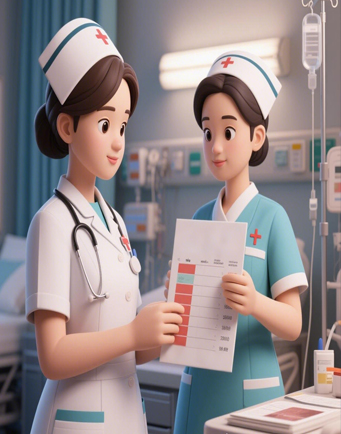Nurses Experience of Prone Position in The Absence of Positioning Tool, and Suggestion of Prone Position Tool: A Phenomenology Study
Downloads
During the COVID-19 pandemic which is a non-natural disaster, the ARDS cases (Acute Respiratory Disease Syndrome) rocketed. Despite the advantages of prone positioning for ARDS care, ICU staff seldom use it due to the unavailability of positioning tools, making it a challenging task for nurses. This study aims to investigate nurses' experiences with manual prone positioning and propose ICU-friendly prone position tools. This research method used a qualitative phenomenology theory study to 15 ICU nurses who were experienced in prone positioning at least 10 times to intubated patients and had complaints about the intervention. The experience was gathered using structured questions and recorded. The data was analyzed following Colaizzi’s thematic method, and all the emerged themes were collected and reported. The research results show that fifteen interviewed nurses noted that prone positioning is physically demanding and requires a coordinated team with a minimum of three staffs, 2 handles patient positioning, 1 leader securing the intubation tube. Before starting, the team assesses the difficulty level. Recommended tools include a slide sheet with handles, a modified Vollman prone positioner, and a crane-like prone harness. The conclusion is nurses find tools highly beneficial for prone positioning but will improvise with available resources like underpads as a ring-shaped pillow if tools are unavailable.
Astua, A. J., Michaels, E. K., & Michaels, A. J. (2021). Prone during pandemic: development and implementation of a quality-based protocol for proning severe COVID-19 hypoxic lung failure patients in situationally or historically low resource hospitals. BMC Pulmonary Medicine, 21(1), 25. https://doi.org/10.1186/s12890-021-01401-0
Bamford, P., Bentley, A., Dean, J., Wilson-Baig, N., Dean, J., & Whitmore, D. (2020). ICS Guidance for Prone Positioning of the Conscious COVID Patient 2020. Intensive Care Society.
Berhan, Y. (2020). Will Africa be Devastated by Covid-19 as Many Predicted? Perspective and Prospective. Ethiopian Journal of Health Sciences, 30(3), 459–467. https://doi.org/10.4314/ejhs.v30i3.17
Binda, F., Galazzi, A., Marelli, F., Gambazza, S., Villa, L., Vinci, E., Adamini, I., & Laquintana, D. (2021). Complications of prone positioning in patients with COVID-19: A cross-sectional study. Intensive and Critical Care Nursing, 67, 103088. https://doi.org/10.1016/J.ICCN.2021.103088
Callihan, M. L., & Kaylor, S. (2021). Proning Pains: Recognizing the Red Flags of Body Mechanics for Health Care Workers Involved in Prone Positioning Techniques. Journal of Emergency Nursing, 47(2), 211–213. https://doi.org/10.1016/j.jen.2021.01.001
Cassano, G., Ingrassia, S., Belotti, M., Marchetti, A., Merletti, L., Iaci, G., Villa, P., & Brambilla, A. M. (2022). Awake self-prone positioning. Italian Journal of Emergency Medicine, 10(3). https://doi.org/10.23736/S2532-1285.21.00117-8
Chatte, G., Sab, J. M., Dubois, J. M., Sirodot, M., Gaussorgues, P., & Robert, D. (1997). Prone position in mechanically ventilated patients with severe acute respiratory failure. American Journal of Respiratory and Critical Care Medicine, 155(2), 473–478. https://doi.org/10.1164/AJRCCM.155.2.9032181
Chui, J., & Craen, R. A. (2016). An update on the prone position: Continuing Professional Development. Canadian Journal of Anesthesia, 63(6), 737–767. https://doi.org/10.1007/s12630-016-0634-x
Chung, L. Y. F., Han, L., Du, Y., & Liu, L. (2021). Reflections on volunteer nurses’ work and caring experiences during COVID-19: a phenomenological study. Journal of Research in Nursing, 26(5), 457–468. https://doi.org/10.1177/17449871211007529
Dewi, Y. S., Hargono, R., & Rusdi, A. (2019). Factors Correlated to Job Stress among ICU Nurses in Surabaya Indonesia. Jurnal Ners, 14(1), 23–27. https://doi.org/10.20473/JN.V14I1.12125
Elmer, N., REIßHAUER, A., Brehm, K., Vockeroth, C., & Liebl, M. E. (2023). Long-term complications of prone position ventilation with relevance for acute and postacute rehabilitation: a systematic review of the literature. European Journal of Physical and Rehabilitation Medicine, 59(1), 111–121. https://doi.org/10.23736/S1973-9087.22.07529-3
Fourie, A., & Beckman, D. (2020). PRONEtect Practical guidance document: Skin Care Considerations for the Patient in Prone Position. Skin Integrity Research Group.
González-Seguel, F., Pinto-Concha, J. J., Aranis, N., & Leppe, J. (2021). Adverse Events of Prone Positioning in Mechanically Ventilated Adults With ARDS. Respiratory Care, 66(12), 1898–1911. https://doi.org/10.4187/RESPCARE.09194
Jeffery, A. D., Kennedy, B., Dietrich, M. S., Mion, L. C., & Novak, L. L. (2017). A Qualitative Exploration of Nurses’ Information-Gathering Behaviors Prior to Decision Support Tool Design. Applied Clinical Informatics, 8(3), 763. https://doi.org/10.4338/ACI-2017-02-RA-0033
Klaiman, T., Silvestri, J. A., Srinivasan, T., Szymanski, S., Tran, T., Oredeko, F., Sjoding, M. W., Fuchs, B. D., Maillie, S., Jablonski, J., Lane-Fall, M. B., & Kerlin, M. P. (2021). Improving prone positioning for severe acute respiratory distress syndrome during the covid-19 pandemic an implementation-mapping approach. Annals of the American Thoracic Society, 18(2), 300–307. https://doi.org/10.1513/ANNALSATS.202005-571OC/SUPPL_FILE/DISCLOSURES.PDF
Moghadam, V. D., Shafiee, H., Ghorbani, M., & Heidarifar, R. (2020). Prone positioning in management of COVID-19 hospitalized patients. Brazilian Journal of Anesthesiology (English Edition), 70(2), 188–190. https://doi.org/10.1016/j.bjane.2020.05.001
Morata, L., Vollman, K., Rechter, J., & Cox, J. (2023). AACN Practice Alert Manual Prone Positioning in Adults: Reducing the Risk of Harm Through Evidence-Based Practices. Critical Care Nurse, 43(1), 59–66. https://doi.org/10.4037/ccn2023174
Ovayolu, O., Ovayolu, N., Genc, M., & Col-Araz, N. (2014). Frequency and severity of low back pain in nurses working in intensive care units and influential factors. Pakistan Journal of Medical Sciences, 30(1), 70–76. https://doi.org/10.12669/pjms.301.3455
Rezoagli, E., Mariani, I., Rona, R., Foti, G., & Bellani, G. (2021). Difference between prolonged versus standard duration of prone position in COVID-19 patients: a retrospective study. Minerva Anestesiologica, 87(12), 1383–1385. https://doi.org/10.23736/S0375-9393.21.15864-X
RS Tasikmalaya. (2011). SOP Gives Prone Position (Issue 103/KEP/2011). RS Tasikmalaya.
RSI Sultan Agung. (2020). SOP Adjusting the prone position. 791.1/SPO/RSI-SA/II/2020.
RSUP Sanglah. (2021). SOP Prone Position.
Scott, J. B., Weiss, T. T., & Li, J. (2022). COVID-19 Lessons Learned: Prone Positioning With and Without Invasive Ventilation. Respiratory Care, 67(8), 1011–1021. https://doi.org/10.4187/RESPCARE.10141
Teklu, S., Sultan, M., Azazh, A., Worku, A., Redae, B., Walelegn, M., Tefera, M., Argaw, R., Waganew, W., Yifru, S., Amogne, W., Tssema, N., Bekele, A., Gebregziabher, Y., Araya, H., Birhanu, A., Demoz, G., Tadesse, B., Seman, Y., & Abayneh, A. (2020). Clinical and Socio-demographic Profile of the First 33 COVID-19 Cases Treated at Dedicated Treatment Center in Ethiopia. Ethiopian Journal of Health Sciences, 30(5), 645 – 652. https://doi.org/10.4314/ejhs.v30i5.2
Tong, A., Sainsbury, P., & Craig, J. (2007). Consolidated criteria for reporting qualitative research (COREQ): A 32-item checklist for interviews and focus groups. International Journal for Quality in Health Care, 19(6), 349–357. https://doi.org/10.1093/intqhc/mzm042
Vollman, K. M. (1997). Prone positioning for the ards patient. Dimensions of Critical Care Nursing, 16(4), 184–193. https://doi.org/10.1097/00003465-199707000-00002
Wiggermann, N., Zhou, J., & Kumpar, D. (2020). Proning Patients With COVID-19: A Review of Equipment and Methods. Human Factors, 62(7), 1069–1076. https://doi.org/10.1177/0018720820950532
Wirihana, L., Welch, A., Williamson, M., Christensen, M., Bakon, S., & Craft, J. (2018). Using Colaizzi’s method of data analysis to explore the experiences of nurse academics teaching on satellite campuses. Nurse Researcher, 25(4), 30–34. https://doi.org/10.7748/NR.2018.E1516
Wotiye, A. B., Shimber, E. T., & Ayele, B. A. (2022). Factors Associated with ICU Mortality at Hawassa University Comprehensive Specialized Hospital (HUCSH). Ethiopian Journal of Health Sciences, 32(3), 505–512. https://doi.org/10.4314/ejhs.v32i3.5
Copyright (c) 2024 JURNAL INFO KESEHATAN

This work is licensed under a Creative Commons Attribution-NonCommercial-ShareAlike 4.0 International License.
Copyright notice
Ownership of copyright
The copyright in this website and the material on this website (including without limitation the text, computer code, artwork, photographs, images, music, audio material, video material and audio-visual material on this website) is owned by JURNAL INFO KESEHATAN and its licensors.
Copyright license
JURNAL INFO KESEHATAN grants to you a worldwide non-exclusive royalty-free revocable license to:
- view this website and the material on this website on a computer or mobile device via a web browser;
- copy and store this website and the material on this website in your web browser cache memory; and
- print pages from this website for your use.
- All articles published by JURNAL INFO KESEHATAN are licensed under the Creative Commons Attribution 4.0 International License. This permits anyone to copy, redistribute, remix, transmit and adapt the work provided the original work and source is appropriately cited.
JURNAL INFO KESEHATAN does not grant you any other rights in relation to this website or the material on this website. In other words, all other rights are reserved.
For the avoidance of doubt, you must not adapt, edit, change, transform, publish, republish, distribute, redistribute, broadcast, rebroadcast or show or play in public this website or the material on this website (in any form or media) without appropriately and conspicuously citing the original work and source or JURNAL INFO KESEHATAN prior written permission.
Permissions
You may request permission to use the copyright materials on this website by writing to jurnalinfokesehatan@gmail.com.
Enforcement of copyright
JURNAL INFO KESEHATAN takes the protection of its copyright very seriously.
If JURNAL INFO KESEHATAN discovers that you have used its copyright materials in contravention of the license above, JURNAL INFO KESEHATAN may bring legal proceedings against you seeking monetary damages and an injunction to stop you using those materials. You could also be ordered to pay legal costs.
If you become aware of any use of JURNAL INFO KESEHATAN copyright materials that contravenes or may contravene the license above, please report this by email to jurnalinfokesehatan@gmail.com
Infringing material
If you become aware of any material on the website that you believe infringes your or any other person's copyright, please report this by email to jurnalinfokesehatan@gmail.com.


